On my second trip to the forest, I took a different route this time. It was especially windy, and the heavy rains closed off the forest trail I took last time.
So I ventured along the Healing Track, a unique trail meant to be walked barefoot. I noticed a sweet, minty scent in the air. The source was phytoncide, a substance released by plants to ward off insects and sterilize their surroundings.
This natural compound is said to be great for health and stress relief, especially when inhaled or absorbed through the skin—called a 'forest stroll.'
The sunlight dappled through the canopy, illuminating the understory and many shades of green in sparkling patches. While this made for poor photography conditions, I used my umbrella to block stray light.
I found myself taking video and even using a pair of special headphones that record both left-ear and right-ear sounds for an immersive experience—so if you watch the video, make sure to use headphones.
I didn't find as many mushrooms as I had on my first outing, but the ones I did discover were still fascinating.
I came across a few species of slime molds, including Complex Lycogala epidendrum, also known as "Wolf's Milk," which I couldn't resist poking with a stick.
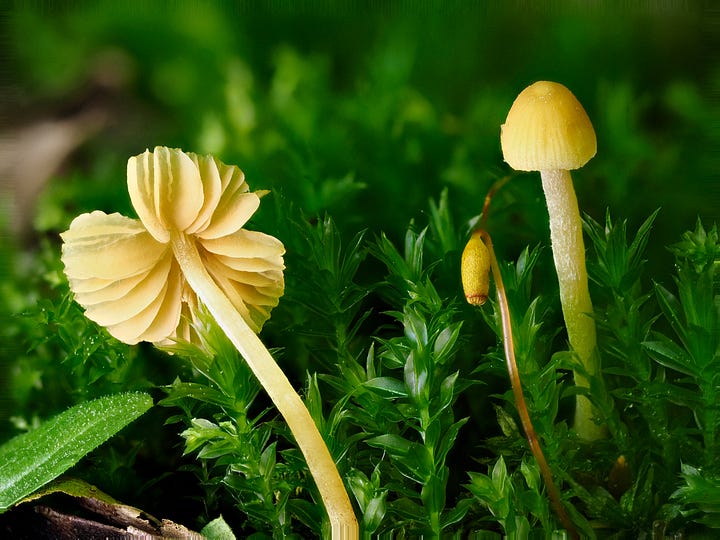
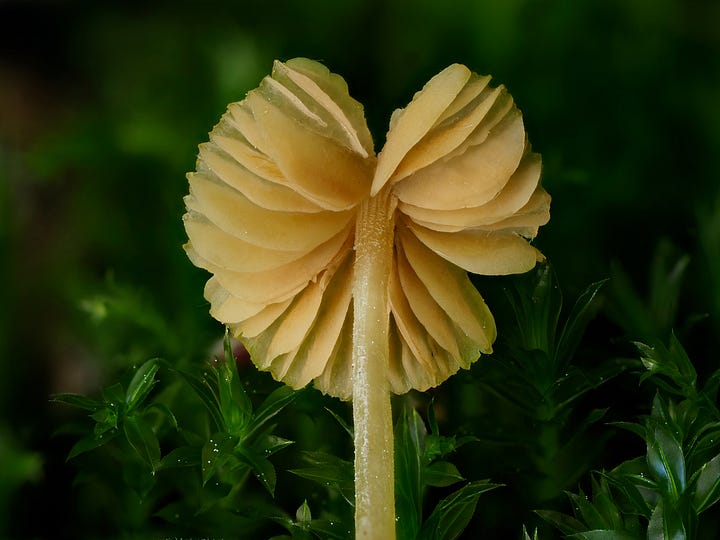
The first find of the day was a couple of tiny yellow mushrooms growing in moss.
These are bryophilic fungi, a group that thrives in symbiosis with non-vascular plants like mosses and liverworts.
The term "bryophilic" originates from "bryo-" (meaning moss) and "-philic" (meaning loving), so these are essentially "moss-loving fungi."
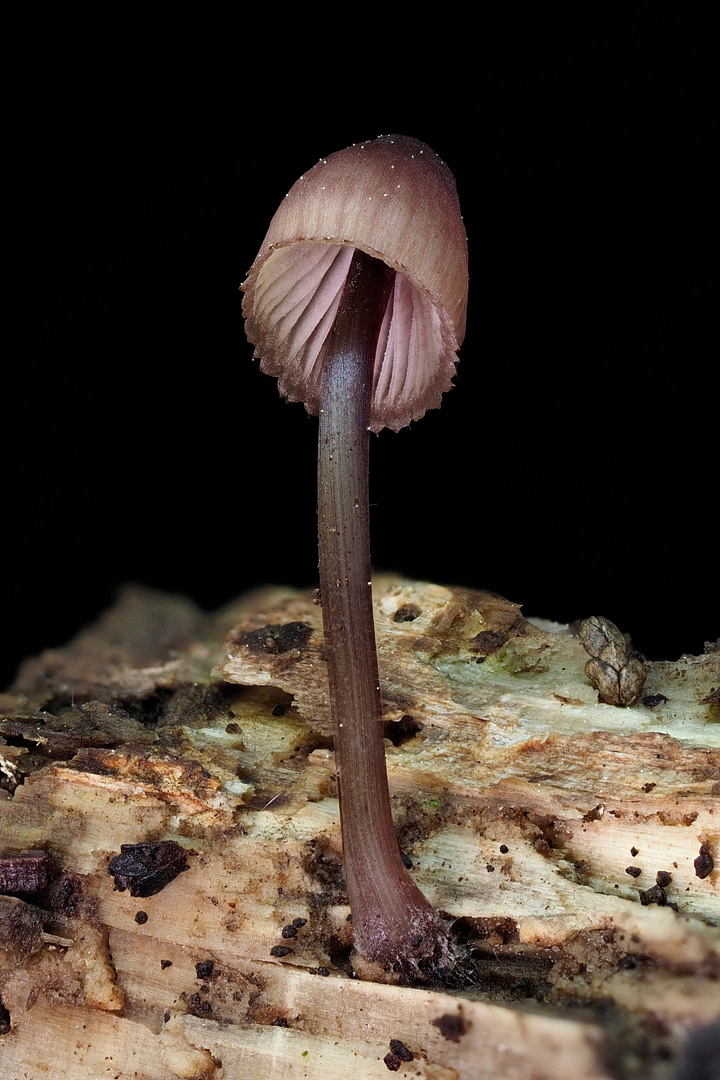
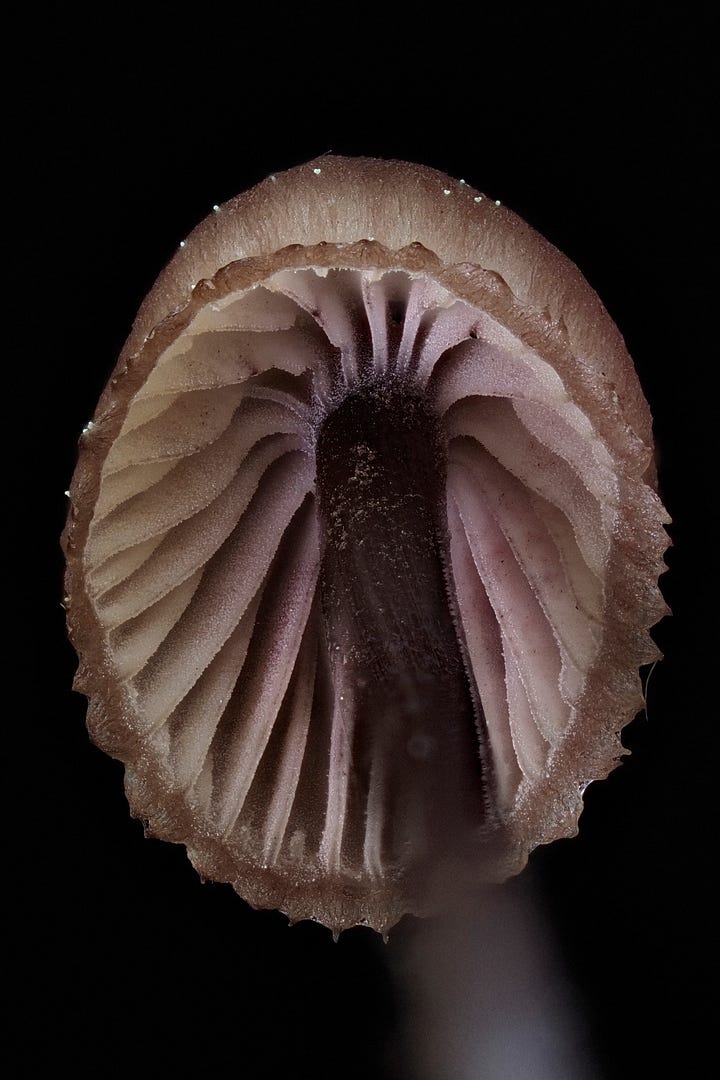
There are many Mycena species with pinkish caps, but what makes them special is the dark red ‘blood’ that exudes when cut or damaged.
The specific epithet haematopus comes from the ancient Greek words haemato-, which means blood, and pus, meaning foot (or leg).
It is said that both the fruit bodies and the mycelia are weakly bioluminescent, but I had no luck. I’ll try again when I find more.
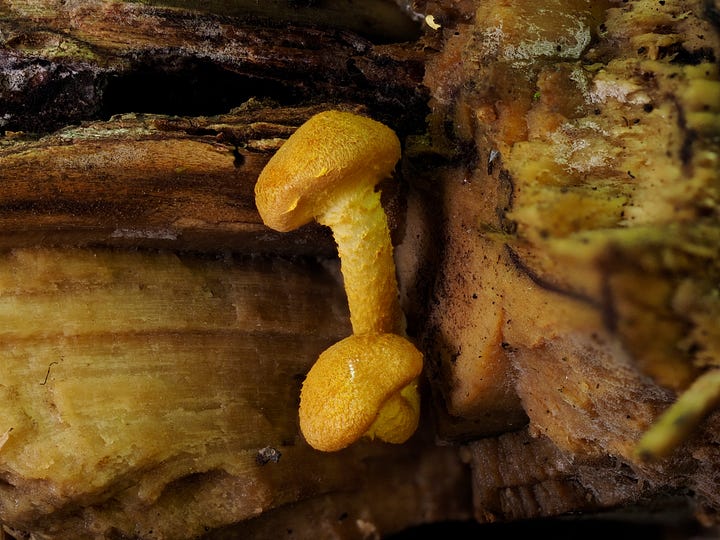

To end the foray, I came upon stacks of oak logs that had been drilled and plugged with shittake mushroom spore dowels.
A sign I translated provided info:
Cultivation order
Log collection: oak trees are harvested from November to February and dried for about four months (logs are 1.2m x 15cm).
Drill holes in logs
Plug dowels: early March
Water: knock them down for 2-3 days starting in May
Set up logs
Optimal conditions
A mixed forest is best, with a daily temperature range of 8-10°C or more. Mushrooms appear in the spring of the following year and reach their peak in the third to fourth year.
I was left with more interesting facts like Jeju Island’s first cultivation period began in 1905 and the most expensive mushroom is the Sanghwang mushroom / Phellinus linteus, which can be priced at over 10 million KRW ($7,320 USD)!…maybe I should be looking for that instead!





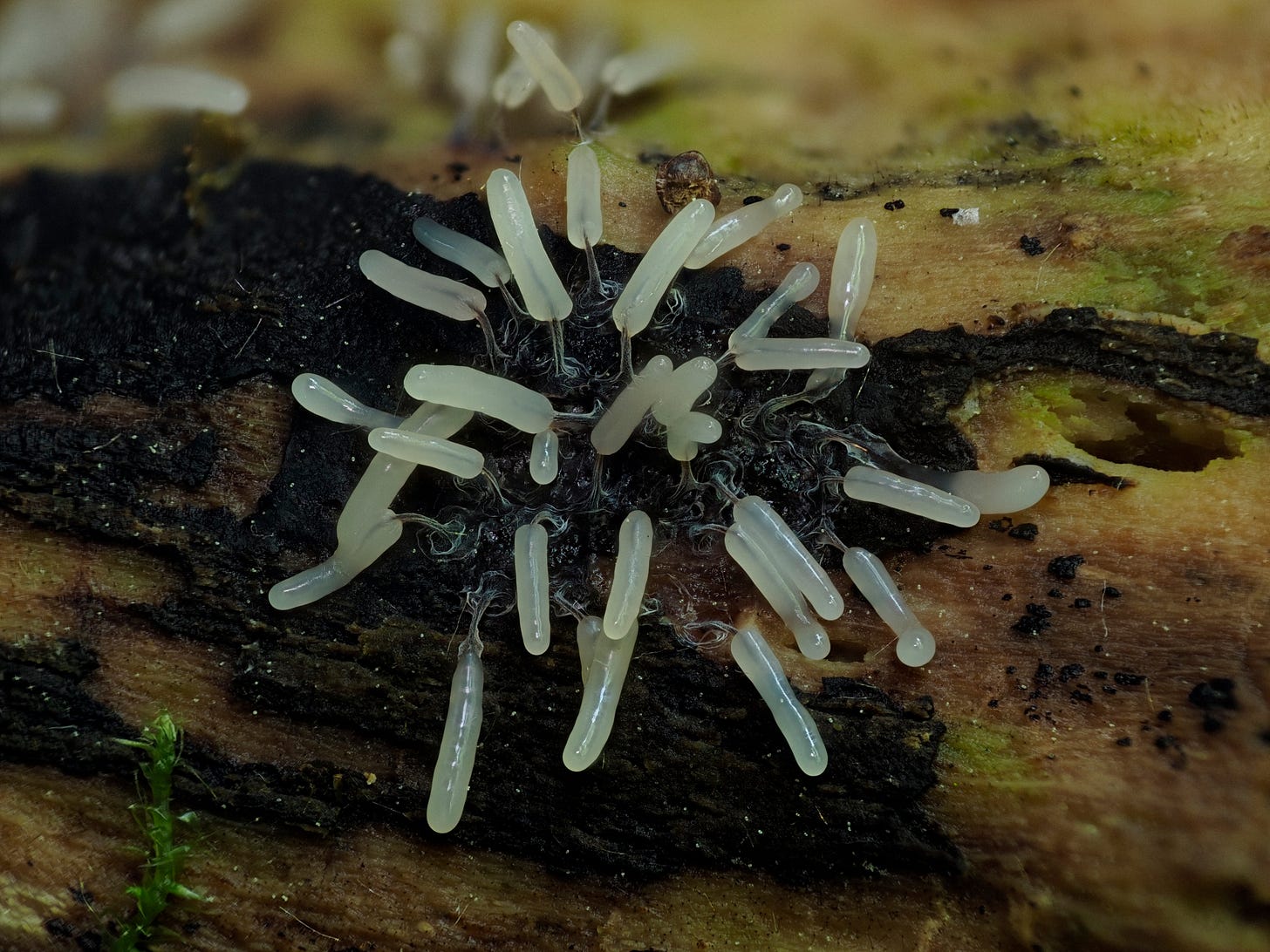






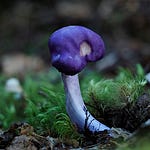

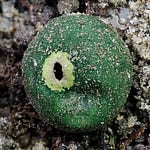



Share this post